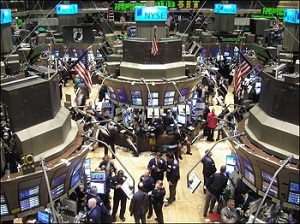Courtesy of Pam Martens
In the past few weeks everyone from Fed Chair Jerome Powell to U.S. Treasury Secretary Steve Mnuchin to former Fed Chair Janet Yellen to bank analyst Mike Mayo have appeared on TV to tell the American people that the big banks on Wall Street are well capitalized. To put it in Janet Yellen’s exact words on CNBC last Thursday, “we have a strong, well capitalized banking system.”
These folks have to keep repeating this mantra to the public because the public is increasingly getting curious as to why the New York Fed has had to pump a cumulative $9 trillion in cash to these Wall Street banks, since September 17 of last year, if they are so well capitalized. Can big banks actually be well capitalized and have no liquid money to make loans – the key function of a bank? As we have regularly noted, the Fed’s trillions of dollars in cash infusions to the banks began months before there was any coronavirus COVID-19 outbreak anywhere in the world.
The reality is that the U.S. banking system only looks well capitalized if federal regulators, banking analysts, and the mainstream business press put blinders on and don’t look at what’s hiding in off-balance sheet items at the banking behemoths on Wall Street — the same fatal mistake they all made in the years leading up to the 2008 collapse.
Why are off-balance sheet items such a huge red flag on Wall Street? We’ll let the researchers who wrote the autopsy on the 2008 financial collapse for the Financial Crisis Inquiry Commission explain. They wrote:
“For example, as of 2007, the five major investment banks — Bear Stearns, Goldman Sachs, Lehman Brothers, Merrill Lynch, and Morgan Stanley — were operating with extraordinarily thin capital. By one measure, their leverage ratios were as high as 40 to 1, meaning for every $40 in assets, there was only $1 in capital to cover losses. Less than a 3% drop in asset values could wipe out a firm. To make matters worse, much of their borrowing was short-term, in the overnight market—meaning the borrowing had to be renewed each and every day…And the leverage was often hidden—in derivatives positions, in off-balance-sheet entities, and through ‘window dressing’ of financial reports available to the investing public.”
…




